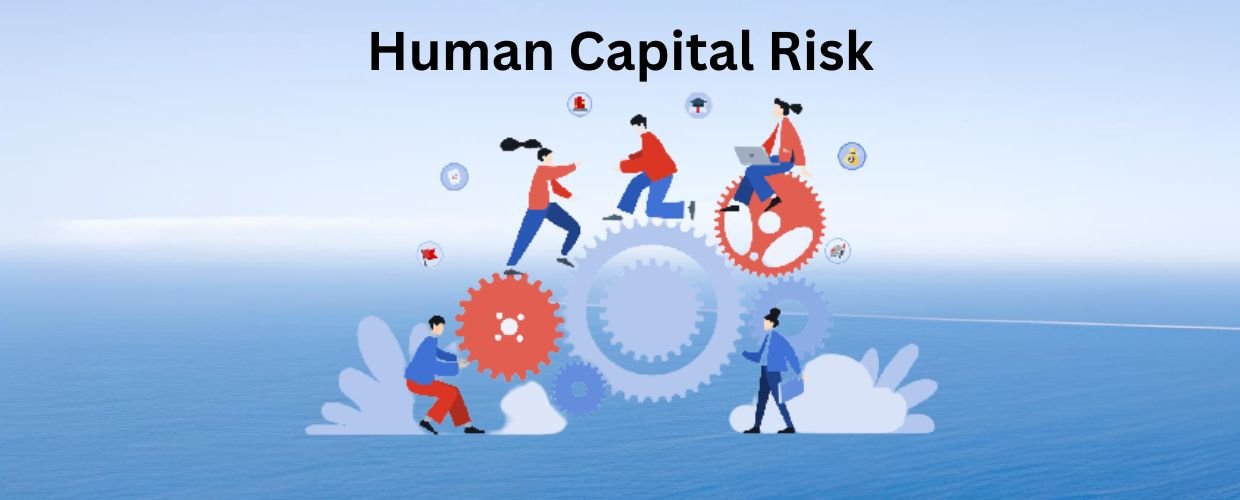In the dynamic and competitive business landscape, organizations recognize that their most valuable asset is their workforce. Human capital is crucial in driving innovation, productivity, and organizational success. However, human capital risk arises from the challenges and uncertainties associated with talent management. It encompasses the potential impact of workforce-related factors on an organization’s ability to achieve its strategic objectives. This article delves into the concept of human capital risk, its implications, and strategies to mitigate and manage this critical organizational challenge.
Understanding Human Capital Risk
Human capital risk refers to the potential threats and uncertainties that arise from workforce-related factors impacting an organization’s ability to achieve its goals. These risks can manifest in various forms, including talent shortages, skills gaps, and employee turnover, lack of succession planning, and inadequate workforce diversity and inclusion. Human capital risk management involves identifying, assessing, and mitigating these risks to ensure the availability of a skilled and engaged workforce capable of driving organizational success.
Implications of Human Capital Risk
The implications of human capital risk are vast and far-reaching. From a company’s bottom line to the personal growth and development of individual employees, the effects of not managing human capital risk can be detrimental.
Talent Acquisition and Retention
Human capital risk directly impacts talent acquisition and retention. Organizations face the challenge of attracting and retaining top talent in a competitive labor market. Talent shortages in critical roles or industries can impede growth and innovation. High turnover rates increase recruitment and training costs and disrupt business continuity. Managing human capital risk requires effective talent acquisition strategies, employer branding initiatives, competitive compensation packages, and robust employee retention programs.
Skills and Knowledge Gaps
Rapid technological advancements and evolving market demands often create organizational skills and knowledge gaps. Human capital risk arises when employees lack the necessary skills and capabilities to meet evolving business needs. It can hinder productivity, innovation, and organizational growth. To mitigate this risk, organizations must invest in ongoing employee training and development programs, establish knowledge-sharing initiatives, and foster a culture of continuous learning to ensure employees possess the skills required to drive success.
Succession Planning and Leadership Development
Succession planning is critical to ensure a smooth leadership transition and maintain organizational stability. Human capital risk arises when organizations need to identify and develop future leaders, leaving leadership positions vulnerable. A lack of effective succession planning can lead to talent gaps, hamper growth, and result in a loss of institutional knowledge. Mitigating this risk involves implementing robust succession planning strategies, identifying high-potential employees, and providing them with leadership development and mentorship opportunities.
Workforce Diversity and Inclusion
Lack of workforce diversity and inclusion poses a significant human capital risk. Organizations not embracing diversity may miss the benefits of varied perspectives, creativity, and innovation. Ineffective diversity and inclusion initiatives can lead to employee dissatisfaction and reduced engagement, negatively impacting the organization’s reputation. To mitigate this risk, organizations should establish inclusive policies, foster a diverse and inclusive culture, and ensure equal opportunities for career advancement for all employees.
Strategies to Mitigate Human Capital Risk
Strategies to Mitigate Human Capital Risk involve identifying and addressing potential risks before they become problems.
Workforce Planning
Implement strategic workforce planning initiatives to align human capital needs with organizational goals. Conduct regular assessments of workforce capabilities, identify future talent requirements, and develop recruitment and retention strategies accordingly. Workforce planning enables organizations to anticipate potential human capital risks and proactively address talent gaps.
Talent Development and Training
Invest in employee development programs that enhance skills, knowledge, and capabilities. Provide ongoing training and learning opportunities to close skills gaps, foster innovation, and adapt to evolving business needs. By investing in talent development, organizations can build a strong internal talent pipeline and reduce the reliance on external talent acquisition.
Employee Engagement and Retention
Create a positive work environment that fosters employee engagement, satisfaction, and retention. Implement strategies such as competitive compensation and benefits, career development opportunities, work-life balance initiatives, and recognition programs. Regularly measure employee satisfaction, conduct stay interviews, and address any issues proactively to reduce turnover and retain top talent.
Succession Planning and Leadership Development
Establish a robust succession planning process to identify and develop future leaders within the organization. Identify high-potential employees and provide them with leadership development programs, mentorship opportunities, and exposure to challenging assignments. Succession planning ensures a smooth leadership transition and mitigates the risk of talent gaps.
Diversity and Inclusion Initiatives
Promote workforce diversity and inclusion by implementing policies and practices that foster an inclusive culture. Ensure fair and equal opportunities for all employees, implement diversity training programs, and establish diversity metrics to monitor progress. By embracing diversity and inclusion, organizations can tap into a wider talent pool, enhance innovation, and reduce human capital risks associated with bias and discrimination.
Conclusion
Human capital risk poses significant challenges to organizations’ talent management efforts. Talent shortages, skills gaps, turnover, succession planning gaps, and a lack of diversity and inclusion can hinder organizational performance and impede growth. Organizations must prioritize strategic workforce planning, talent development, employee engagement, succession planning, and diversity and inclusion initiatives to mitigate these risks. By proactively managing human capital risks, organizations can ensure a skilled and engaged workforce capable of driving innovation, productivity, and long-term success.















